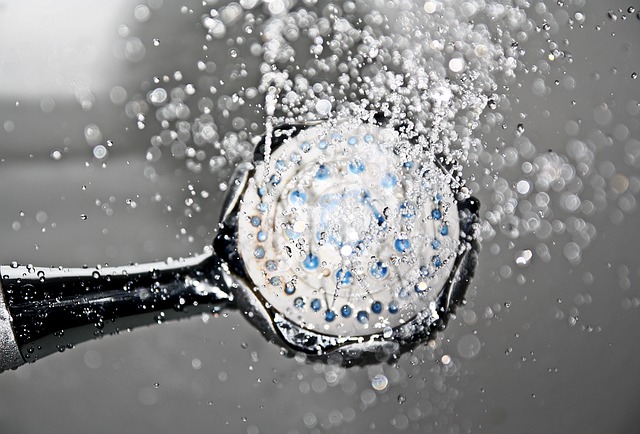How to Choose a Ball Valve
How to Choose a Ball Valve
A valve is a plumbing device that, like a faucet, is equipped with a moving part that is operated to regulate the flow of a fluid passing through a pipe. Compared to a tap, which is small, a valve is generally larger and installed in pipes of generous diameter. The ball valve is a ball valve used more as a shut-off valve than a flow control valve.
Types of valves
There are many types and sizes of valves for domestic plumbing (heating, water…) and industrial applications (dams, fuel depots…). Even if the purpose of a valve is to regulate the flow of the fluid passing through it, the core of the valve and its operation mode differ. There are several types of valves:
Spool valve
Gate valves contain a flap that opens or closes the flow of fluid, similar to the way a roller shutter descends. Generally, gate valves are operated by a handwheel on a screw (motorizable) to regulate fluid flow precisely.
Globe Valve
Globe valves have a seat (as on a tap) against which a valve descends to more or less block the passage of the fluid. The descent of the valve on the seat is generally made via a handwheel allowing precision in the regulation. On some valves called “diaphragm”, the valve is encapsulated in a deformable diaphragm. This flexible diaphragm, pushed by the valve, bathes in the fluid to be regulated.
Flap valve
Flap valves, or butterfly valves, have a flap inside the body (similar to a throttle or choke valve on an engine) which, by pivoting on itself, more or less clears the passage of the fluid.
Ball valve
The ball is a hollow ball that is actuated so that its opening or side is presented to the flow. In the ball valve, it is a hollow ball that pivots to open or close partially or wholly the passage of the fluid, hence its other name, the ball valve. When the valve is open, the fluid passes through the recess in the ball, presenting its ring face to the fluid. When the valve is closed, the fluid collides with the sphere’s wall.
The ball’s usefulness in the sphere is to allow the passage of a fluid in the ring without damaging the seal provided by the sides of the sphere in the valve’s body. Due to the fluid dynamics, the ball valve does not allow for precise control, but it does allow for quick operation, as the ball only needs to be rotated a quarter turn to open or close the valve fully. For this reason, ball valves are generally quarter-turn valves operated by handle or lever rather than by handwheel.
Open ball, fluid flowing: the handle is in the extension of the pipe. Closed ball, fluid stopped: the handle is perpendicular to the pipe. Also, being generally equipped with a quarter-turn handle or knob operation, the ball valve has the advantage, once in place, of indicating by the position of the handle the degree of opening or closing of the internal ball.
Good to know: even if the complete operation of a ball valve requires little effort and is fast (a quarter turn), ball valves can, in most cases, be motorized, in particular, to be remote-controlled or robotized.
How to choose a ball valve

Ball valve(s) are chosen according to various criteria related to the network on which they are installed. First, using the ball valve is limited to systems that do not require precise flow control but relatively easy and quick opening and closing. A ball valve is also chosen according to
The nature of the fluid flowing in the system
The density of the fluid, but also its food grade, or corrosive nature, requires specific materials for the valve body and ball. In general, ball valves are made of steel, brass, or stainless steel.
Tube diameter
The diameter for mounting the valve on the pipe is standard, expressed in millimeters or fractions of an inch (½, ¾, etc.). A valve of the same diameter as the pipe must be selected to mount a valve on a pipe.
Mounting
In general, ball valves are screwed onto threaded connections. The valve is chosen according to the fittings already in place, depending on the type of assembly: male/male valve (in which both are to be screwed into the female fittings of the pipe), male/female, female/female…
Note: Most of the threaded connections on ball valves require the installation of a sealing device, which can be an O-ring, wire, tape or paste.
The type of operation
The type of operation should be chosen according to the valve’s location, between short or long handles, or even butterfly for tight spaces.
For common domestic valves (swimming pool, heating, water, DHW…), the body and the ball are generally designed for a pressure lower than 20 bars with a moderate temperature. Still, industrial valves can require higher pressures at very low or very high temperatures.
Price of a ball valve
The price of ball valves depends firstly on the diameter of the pipe they are to equip and secondly on the specificity of the material. As the diameter increases, the price of a ball valve reaches $15 for domestic uses (watering, heating, clear water distribution…). Still, it can exceed $40 for more specific ball valves (chlorine pool). Ball valves for domestic use in small diameters can be found in DIY stores and on the Internet for about $3.




[…] Having a job is of paramount importance these days. Indeed, there are many jobs in the world. The fact…
[…] Personally, I need a hot shower whether we are in winter or summer because I don’t feel clean otherwise,…
[…] Sound off in the comments section below, and tell us what you want to read next and if you…
[…] unfortunately, when it concerns a major plumbing issue, a botched job might end up causing a lot of harm…
[…] overestimate your talents, either. Sure, some simple jobs (like prevention!) can be done by a handy homeowner. But don’t…